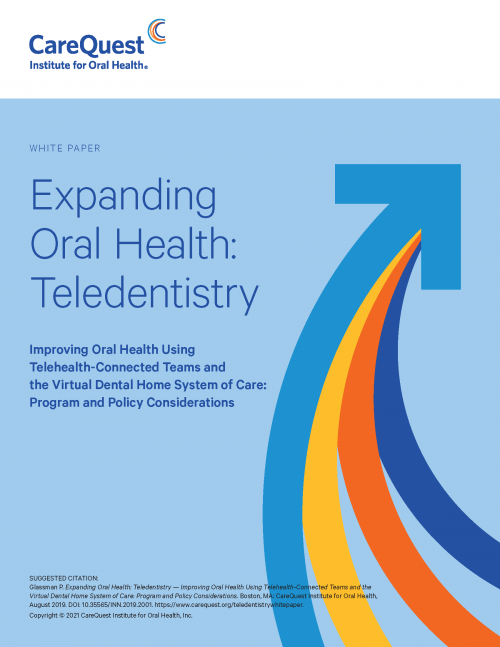Telehealth offers exciting new opportunities for dentistry, particularly in terms of reaching underserved populations. A report from CareQuest Institute reviews the regulatory environment needed to support telehealth-connected teams, as well as considerations for incorporating telehealth into dental practices and community-based oral health care systems. It explores various telehealth modalities, coding updates and the nuts and bolts of implementation. Finally, it outlines the role that telehealth is projected to play in dentistry in the coming decades.
Highlights from the report include:
- States can support advances in oral health care by creating favorable policy environments, with an initial focus on public payment programs.
- Business models that can incorporate teledentistry include: outreach to existing patients of a dental practice; integration of oral health into general health care environments; and mobile and portable care delivery.
- The Virtual Dental Home System of Care (VDH) is a promising approach that uses telehealth technologies to facilitate a comprehensive community-based system of care.
Telehealth technologies can be described as an emerging “disruptive innovation” in the oral health industry. With appropriate regulatory environments in place, and with strategic changes by dental practices, these new models of care have the potential to significantly improve the reach and impact of oral health care.
You may also be interested in:
Teledentistry Use Gains Traction During COVID-19 highlights the continued value of telehealth and its opportunity to provide additional revenue while enhancing dental care access for current and new patients.
Teledentistry is an Effective Tool to Triage Patients and Save Money explores dental service utilization patterns and rate of return following teledentistry visits.
Teledentistry: Providing Access to Care During the COVID-19 Crisis explores how providers can use telehealth to consult with patients, triage their needs and offer limited urgent services, deterring those with nontraumatic dental conditions from seeking care in emergency departments.

